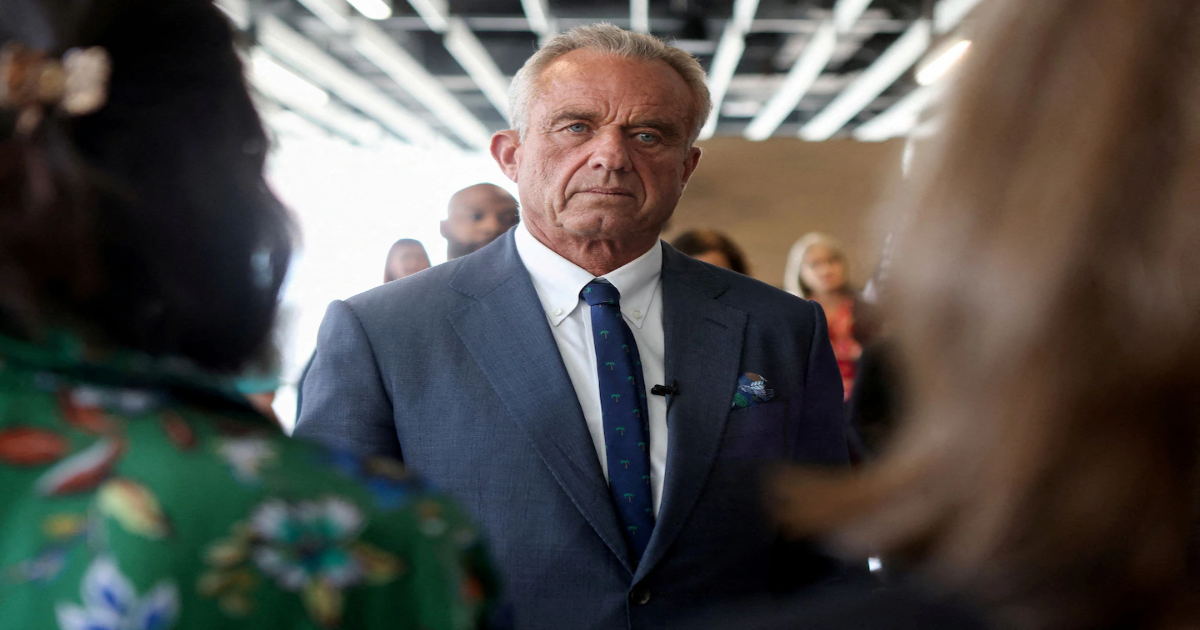One in 31 8-year-olds had autism in U.S. communities examined by the Centers for Disease Control and Prevention, a small increase from previous years, according to a report released Tuesday.
The study comes as autism is attracting intense interest from President Donald Trump and Secretary of Health and Human Services Robert F. Kennedy Jr., who have made the condition a priority for the new administration.
Kennedy first shared the central finding of the biennial surveillance report in a Cabinet meeting last week, during which he vowed to discover the causes of the condition and eliminate “those exposures.”
For years, Kennedy has linked the rising prevalence of autism to vaccines, despite voluminous scientific research that has debunked that claim. In a statement reacting to the report Tuesday, Kennedy said the “autism epidemic is running rampant.”
Autism is a spectrum of neurological conditions that affect how people communicate, behave and interact with others. The Trump administration is launching a research program to investigate its causes, but a body of research already demonstrates the condition is primarily genetic and influenced by environmental factors that are still under investigation.
Responding to Kennedy in the Cabinet meeting, Trump described the 1-in-31 figure, compared with 1-in-36 in the previous report, as a “horrible statistic.” He posited that there’s “something artificial out there that’s doing this.” Kennedy later blamed the rising autism prevalence on “an environmental toxin.”
The CDC report undercuts claims by Kennedy and Trump, instead attributing the recent increase to better screening. The report used 2022 data to examine cohorts of 4-year-old and 8-year-old children in 16 communities. It focused on the prevalence of autism among 8-year-olds, who are more likely to have been diagnosed by that age, using 4-year-old children as a measure of early detection.
“Research has not demonstrated that living in certain communities puts children at greater risk for developing ASD,” the report said, using the acronym for autism spectrum disorders. “Differences in the prevalence of children identified with ASD across communities might be due to differences in availability of services for early detection and evaluation and diagnostic practices.”
Areas with the highest autism rates also devoted resources to early detection, the report noted.
The report examined communities of various sizes, including a portion of a south-central Texas county and a swath of the Atlanta metropolitan area. The study was published in the CDC’s weekly scientific journal, the Morbidity and Mortality Weekly Report. Spokespeople for HHS and the CDC did not immediately respond to requests for comment on the report.
A San Diego-area community had the highest autism prevalence of any community in the study, with 1 in 19 8-year-olds diagnosed with the disorder. But California has a program that trains hundreds of pediatricians to screen children for autism early in their lives, as well as regional centers that provide evaluations and coordinate services for children with disabilities.
Pennsylvania, where a suburban Philadelphia community had the second-highest prevalence among 8-year-olds, at 1 in 21, provides Medicaid to children with disabilities regardless of their parents’ income, increasing the odds of early detection and treatment by providing easier access to health care.
Puerto Rican children born in 2014 had below-average autism rates, the report found, but children born after the territory launched a campaign to improve early detection had the second-highest autism prevalence in their age group.
Kennedy last week described the slight increase in overall autism prevalence as “astonishing,” but researchers cautioned against making much of the change.
The communities in the report are not a representative sample of the nation as a whole. The sites examined also change over time, complicating comparisons.
In his statement, Kennedy painted a dire picture of the toll of autism.
“The risks and costs of this crisis are a thousand times more threatening to our country” than covid-19, Kennedy said. “Autism is preventable and it is unforgivable that we have not yet identified the underlying causes.”
Leaders of the Autism Society, an educational and advocacy organization, called Kennedy’s rhetoric misleading and stigmatizing.
“Claiming that Autism is ‘preventable’ is not science based, and places unnecessary blame on people, parents and families,” said Christopher Banks, president and chief executive of the organization. “Autism is not a chronic disease, nor a childhood disease; it is a lifelong developmental condition; it is not an epidemic, nor should it be compared to the covid-19 pandemic, and using language like that perpetuates falsehoods, stigma and stereotypes.”
Peter Hotez, a pediatrician and author of a book that examines the genetic causes of autism, said what has been described as the rise of autism instead reflects an increase in awareness.
“The increase is overwhelmingly due to those broadening criteria and getting better at diagnosing,” Hotez said in an interview before the report’s release. “It doesn’t mean there’s no genuine increase, and there are environmental factors and they should be looked at.”
Air pollution, the use of certain medications and older fathers are among the environmental factors researchers are studying.
Dozens of studies across the globe conducted over decades have found no connection between vaccines and autism. Autism experts have expressed concern that the Trump administration is laying the groundwork to blame vaccines for the condition, noting HHS has hired a discredited researcher who propagated the false connection to study the topic.
Trump mused last week that “maybe a shot” is responsible for rising autism, and Kennedy dismissed the extensive research showing no connection, saying vaccines would be examined.
The report also contradicted Kennedy’s assertion on Fox News last week that the report would show as many as 1 in 10 Black boys have autism. The CDC did not include prevalence data by both race and gender, but it did find 1 in 27 Black children and 1 in 20 boys had autism.
Researchers have found an overall increase in autism among children of color, a reversal from more than a decade ago when the condition was most prevalent in White children and in wealthier neighborhoods. In 2020, autism became more common in 8-year-old children of color than in White children. The new report shows the trend continuing.
Experts have attributed these changes to better access to testing and screening.
The report’s authors said deeper analysis of income and race suggests barriers still exist, which may explain why the study found low autism prevalence in primarily Hispanic Texas communities with below-average median incomes.
Lena H. Sun and Dan Keating contributed to this report.



